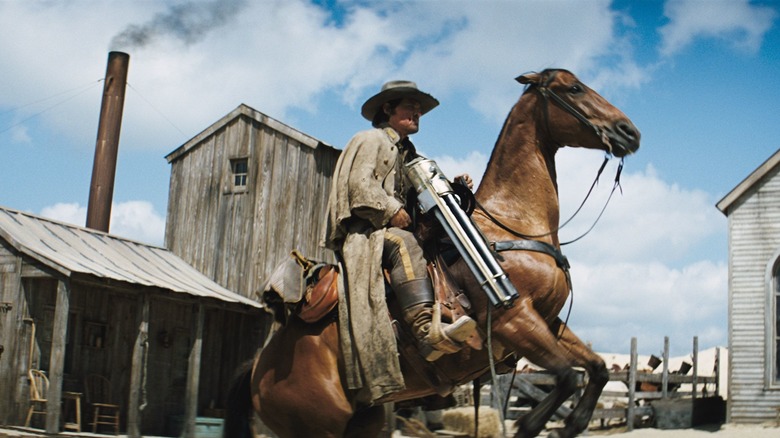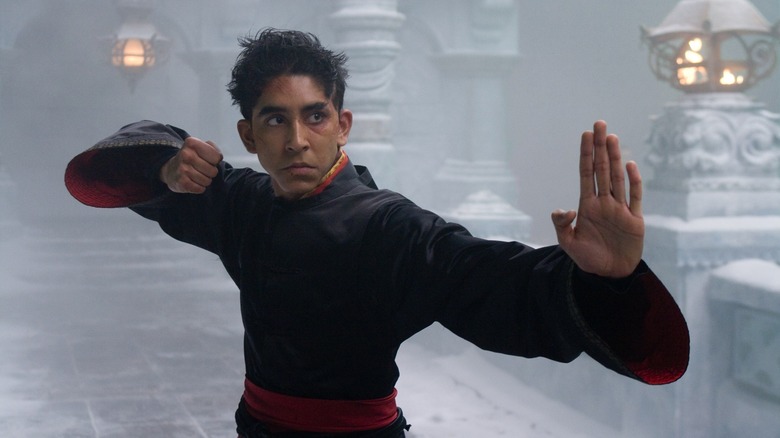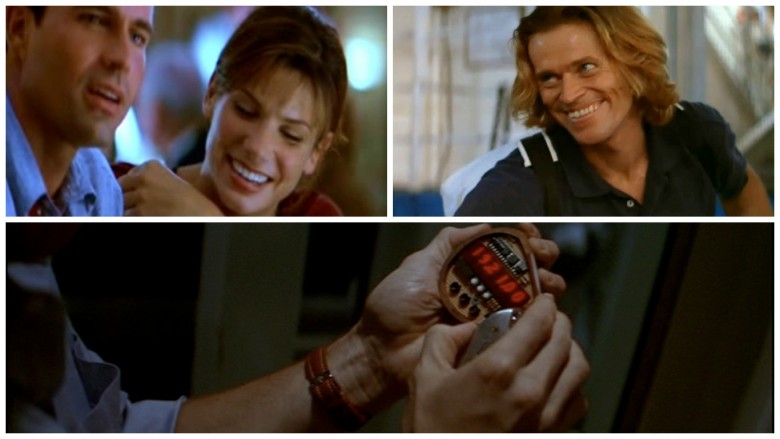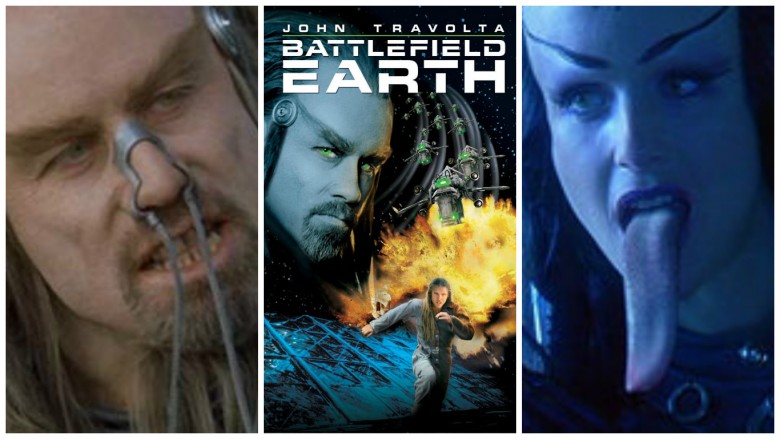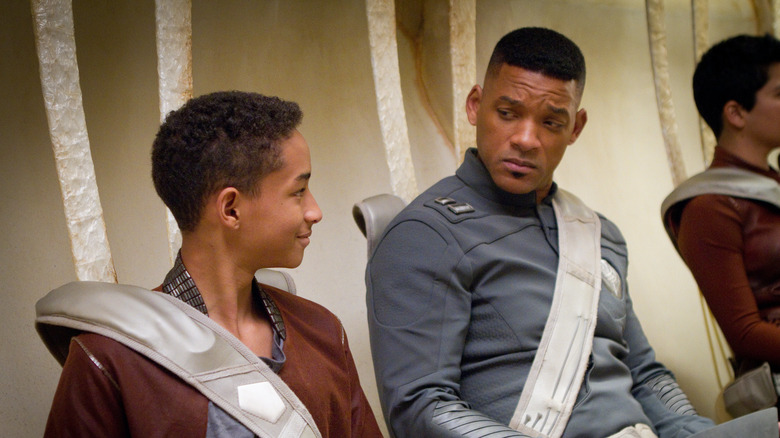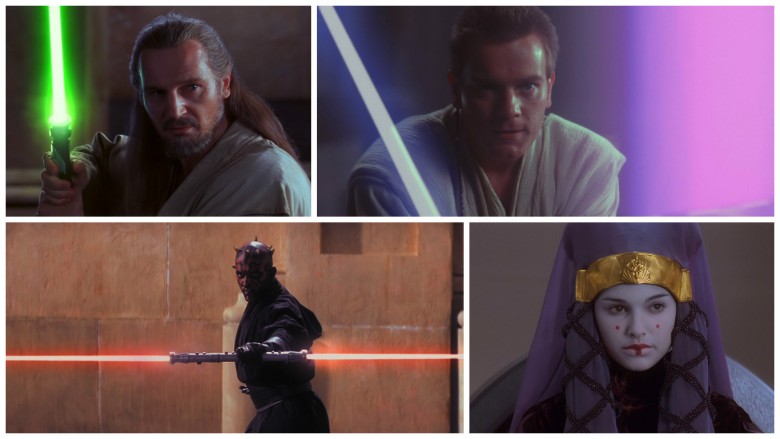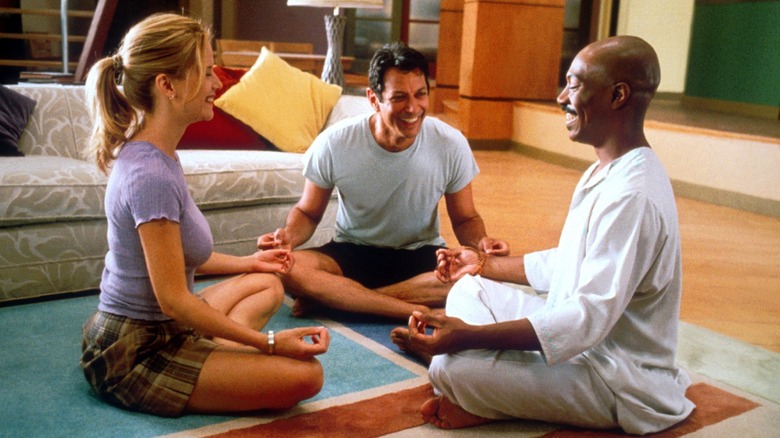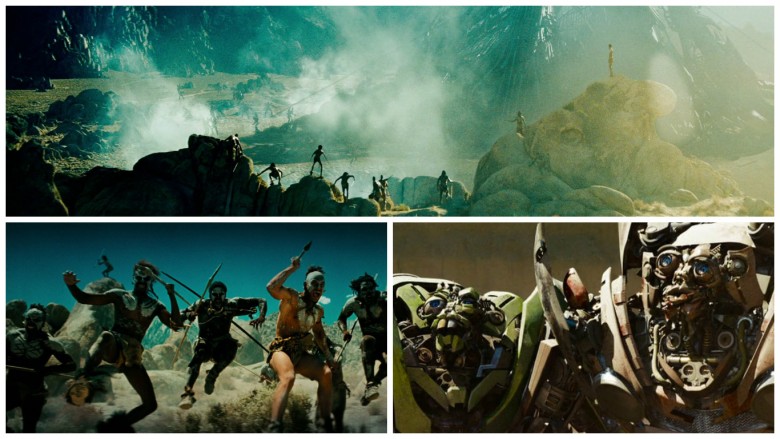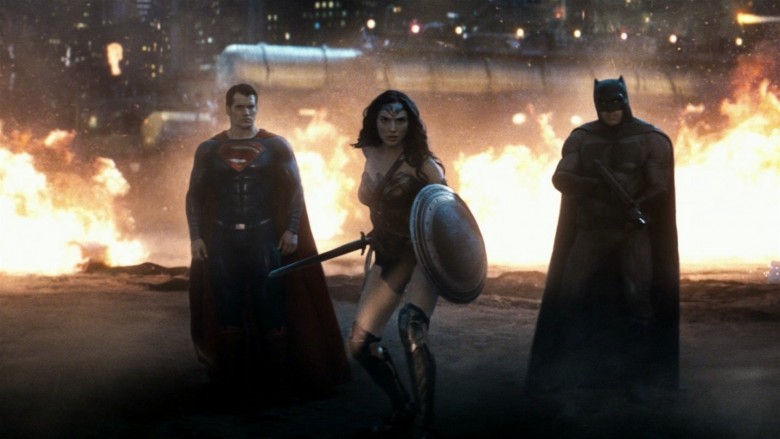Films With Great Beginnings That Fell Apart After Only Minutes
A great beginning is important, but it isn't everything—and that definitely applies to the movies. Plenty of films get off the starting block just fine, but those interesting opening acts are just a prelude to a series of stumbles that end in utter collapse. Here's our list of bad movies that initially looked like they could have been great.
Jonah Hex
Who doesn't love a sci-fi revisionist Western? It's a genre that keeps on giving. There's TV shows like Firefly and Westworld and anime gems like Cowboy Bebop and Trigun, and movies like... Well, there's the original Westworld, Back to the Future III (sort of), and imported postmodern masterpieces like The Good, The Bad and The Weird. That's about it, to be honest. Mediocre outings like Cowboys and Aliens and disasters like Wild Wild West inspired concern about the limits of the subgenre's appeal, but nothing could prepare movie audiences (or producers) for Jonah Hex.
In retrospect, the cast is pretty solid: they got Thanos, Cyrus 'the Virus' Grissom, April O'Neil, the handsome android from Prometheus, and Gob, who made a huge mistake when he got involved with this broken DC Comics adaptation. All Jonah Hex had to do was be better than Wild Wild West.
As we saw with The Last Airbender, rich source material is no guarantee that the movie will be good. In the comics, Jonah Hex is a troubled antihero. A Confederate soldier who refuses to fight and gets himself captured by the Union, Hex refuses to turn over any information about his soldiers' whereabouts. As retribution, his captors frame him as "a turncoat and a traitor." Quentin Turnbull, the wealthy father of a fallen Confederate soldier (with whom Jonah has a rich history), blames Hex for his son's death and vows vengeance. There's enough content right there for a solid movie—and that's without getting into the thrilling origins of the Mark of the Demon on his face, his thrilling (albeit culturally insensitive) early history as a child slave of terrifying Apaches, and the supernatural powers he eventually acquires.
So what happened? According to Keith Phipps of the A.V. Club, the movie's "stitched-together" slipshod quality is probably a consequence of the project's numerous last-minute changes. "Rumors of trouble dogged Jonah Hex's production," wrote Phipps, "from the time its original directors, the Crank writing-directing team of Neveldine & Taylor, abandoned the project, up to when director Jimmy Hayward—an animation vet making his live-action debut—conducted last-minute reshoots with another director's help."
The Last Airbender
The Last Airbender should've been good. It...wasn't. Eminent film scholar Roger Ebert called it "an agonizing experience in every category I can think of and others still waiting to be invented. The laws of chance suggest that something should have gone right. Not here." Tell us how you really feel, Mr. Ebert.
The names of the supporting cast in the opening credits almost make you think it could work. The producers got The Daily Show's Aasif Mondvi, Slumdog Millionaire's Dev Patel, and the woefully underappreciated man of a thousand faces Cliff Curtis—who appears as Fire Lord Ozai here and has played characters such as Lt. Cortez, Sheikh Fadlallah, FBI Deputy Director Miguel Bowman, and Pablo Escobar. Too bad they're given nothing to do but stand around rigidly and provide exposition, while director M. Night Shyamalan does nothing to help the miscast child actors in the starring roles.
The opening credits of The Last Airbender show people using tai chi to manipulate the elements, and that dimly lit 15-second demonstration is as good as this stupid movie ever gets. Ebert makes the point that the flick's child actors, whom Shyamalan expects to carry the film, are "bad" because, in all likelihood, they've not been given proper instruction by their director. After praising the anime series that The Last Airbender misrepresents and lamenting the big-budget animated movie that never was, Ebert "[closes] with the hope that the [movie's] title proves prophetic." Now that, Fire Lord Ozai, is a real burn.
Speed 2: Cruise Control
You know what fixes every borked relationship? If you answered "Dramamine bender in a ginormous nightmare vessel on the high seas," you, Annie, and her new boyfriend Alex have something in common. In Speed 2: Cruise Control, Annie (played by Sandra Bullock, returning from the original) is going on a cruise with her beau Alex, played by a bored Jason Patric, who suddenly turns into MacGyver in the middle of their ill-fated vacay.
What keeps this ill-conceived cash grab from sinking immediately? Five words: Willem Dafoe's golf club bombs. They're like the Penguin's umbrella gun in Batman Returns, which turned an already awesome movie into the best Batman movie of all time. (If we need to write an article to prove it, we will.) When we saw the bomb-clubs, we thought, "Maybe this'll be good after all." Nope! Lisa Schwarzbaum of Entertainment Weekly summed it up succinctly: "Willem Dafoe... cackles maniacally and fiddles with bomb settings [but the] blinking lights might as well be emanating from a vital-signs monitor. The story is dead in the water."
Battlefield Earth
Speaking to Charlie Rose about trying to get an adaptation of Scientology founder L. Ron Hubbard's novel Battlefield Earth funded, John Travolta said, "I thought that, if done well, this could be one of the most entertaining science fiction movies ever, ever done." Certainly, Travolta's arduous campaign appears to have been a decades-long labor of love. Indeed, according to the Guardian, "The book, Battlefield Earth, was sporting a 'soon to be major motion picture' on its cover as long ago as 1984." By all accounts, the movie didn't turn out as Travolta hoped it would.
What's it about? J. Hoberman of the Village Voice tried in vain to untangle the plot: "Set a thousand years in the future, the movie posits a world conquered by extraterrestrial Psychlos who... have enslaved most of humanity and reduced the rest to a pathetic pagan tepee-and-buckskin lifestyle. The Psychlos, led by John Travolta and a Wookie-like Forest Whitaker, are big fellas with green eyes, dreadlocks, formidable paws, and mossy teeth...[who] hang around a windowless bar swilling tumblers of a chartreuse liquor with the baleful glow of radioactive urine." Not exactly our idea of top-shelf entertainment.
Counted among the worst movies ever made, Battlefield Earth drew criticism from ex-Scientologists—"suppressive persons," in the Church's lingo—who raised concerns about members of the Church dictating edits. If the whistleblowers are right, then Battlefield Earth should have been Scientology's Passion of the Christ—a would-be worldwide religious awakening in blockbuster form. According to Travolta, though, Battlefield Earth "absolutely has nothing to do with Scientology," aside from Hubbard. Whom should we believe?
In times of doubt, we turn to sage of the cinema, Roger Ebert. With characteristic irreverence, Ebert jokingly agreed with Travolta's claim. "The film contains no evidence of Scientology or any other system of thought; it is shapeless and senseless, without a compelling plot or characters we care for in the slightest." If there is an allegory at the heart of the movie, we can only presume it's there accidentally, and it symbolizes how not to make a compelling science fiction film.
After Earth
In the beginning of After Earth, Jaden Smith's monotone voiceover begins, "I've heard stories of Earth. A paradise... Until we destroyed it." You'd expect this type of line to be uttered over a shot of a dusty, barren hellscape, with War Boys revving in the distance, but you'd be wrong. In the scene, Jaden lies in the nitrogenous soil of a grassy paradise, surrounded by the lush foliage of oxygen-creating plant life. (This is your destroyed Earth? This Bob Ross landscape is what's left of Earth? Looks lovely, to be honest.)
To make matters ever less scientifically sound, our adolescent hero appears to be struggling to breathe, and yet a bunch of scary, oxygen-breathing jungle creatures, with biospherical requirements similar to humans, prowl the wilds. Furry primates can breathe just fine, meanwhile other less furry primates—humans—gasp for breath. What? Then there's the absurd conceit that in a thousand years, ecosystemic evolution has had time to generate revolutionary changes in the planet's biology. Finally, there are the aliens who can "smell fear."
After Earth wants us to believe the impossible: that there would be less oxygen on Earth without humans around to pollute it, that fear has an odor, and that Jaden Smith deserves the career he's been handed.
Star Wars Episode I: The Phantom Menace
Without Star Wars Episode I: The Phantom Menace, we wouldn't have Star War The Third Gathers: Backstroke of the West HD, that masterpiece of re-translated, redubbed, gibberish cinema. ("Good-good-good. Let us counter-attacking!") An English re-translation of a bootleg Chinese translation of Star Wars Episode III: Revenge of the Sith, the YouTube gem almost makes up for George Lucas's egregious indiscretions. As we must appreciate our in-laws for birthing our spouses, we appreciate the first of the prequels—but it isn't easy. The Phantom Menace makes Battlefield Earth look like A New Hope running on a crooked projector.
Much has been made of the fact that Jar-Jar and a number of new aliens come across as thinly disguised ethnic stereotypes. As Mark Caro of the Chicago Tribune put it in his scathing review, Jar-Jar "sounds most like a prepubescent Mushmouth from 'Fat Albert and the Cosby Kids,'" and "walks in an exaggerated pimp strut. He's not the only ethnic caricature, either; the Trade Federation officials sound like stock [East Asian] villains."
Remember how critics burned M. Night Shyamalan for glorifying himself as an artist and demonizing movie critics when he made The Lady in the Water? In that movie, Shyamalan cast himself as a heroic, misunderstood artist-writer and made his villain a "clueless film critic." The Phantom Menace is Lucas's Lady in the Water, with the greedy galactic tax-man in place of the critic. "The taxation of trade routes to outlying star systems is in dispute."
Writing in 2016, amid another tax-related quandary involving Lucas, Phil Rosenthal of the Chicago Tribune points out, "Is it lost on everyone that Episode I of George Lucas' own greatest narrative, the Star Wars series, ostensibly begins with a pushback on taxes, for crying out loud?" It's a prescient point. In the 16 Earth years between Return of the Jedi and Phantom Menace, Lucas amassed billions of dollars from merchandising—and suddenly, the biggest evil in the galaxy is no longer the mysterious Dark Side of the Force but "the greedy Galactic Trade Federation."
All things considered, though, the movie opens on a high note. The screen is black and the comforting mantra, "A long time ago, in a galaxy far, far away..." appears onscreen, accompanied by silence, then epic fanfare. The first sentence of that old, familiar Star Wars crawl is pretty enticing: "Turmoil has engulfed the Galactic Republic." Turmoil, you say? What sort of turmoil, Mr. Lucas? We're awful excited to learn the specifics. We've been waiting for 16 years to learn how the whole Skywalker/Darth Vader thing started. It's...space taxes? What next, a Star Trek movie about Tort Reform?
Holy Man
Holy Man is a type of movie that appeals to execs in Hollywood—a feel-good heartstring-tugger. (In this case, however, "good" is a stand-in for "bored.") In Holy Man, spending money while listening to why you shouldn't spend money brings spiritual fulfillment. It's all the values of Hollywood bound up in an unfunny package. As Margaret A. McGurk of the Cincinnati Enquirer put it, "Oh brother, what a preposterous package it uses to deliver its warm and fuzzy message about What Really Matters."
Eddie Murphy plays G, a so-called holy man who wants to transform home shopping into a religious experience. Is G truly holy or just a person? What makes him holy? Can we all be holy? Maybe—just maybe—we were holy all along, but we just didn't know it. Or maybe it's a cynical ploy on the part of personalities in the TV home-shopping industry to ingratiate themselves to us on a spiritual level, before the internet runs them out of town... Whoa.
So when does Holy Man get hellish? As Mick LaSalle of the San Francisco Chronicle puts it, "About halfway through Holy Man the terrible reality sets in: Oh, no, they mean for us to take this seriously." That's a pretty generous assessment, LaSalle; G would be proud.
Transformers: Revenge of the Fallen
While the Wahlbergian Age of Extinction gets a lot of hate and Dark of the Moon isn't exactly a work of art, we consider Revenge of the Fallen to be the ugliest of the subpar Transformers sequels—and not just for its dizzying, chromed-out, nonsensical visuals. As the folks at CinemaSins point out, in the opening montage, "The movie uses primitive hunters as an example of the brutality of humanity." In fact, there is a racist robo-thread running through the entirety of this itchy CGI sweater of cinematic apostasy that, if pulled, causes Bay's movie to completely collapse.
As Sonny Bunch of the Washington Times relates (quote can be found after the in-article jump), "Autobots Mudflap and Skids, a pair of twin robots voiced by Tom Kenny, sport noticeable inner-city accents and are adorned with gold caps on their teeth. At one point, they're asked if they can read some ancient runes that keep popping up. 'Nah, we don't really do much reading,' one of them replies, much to the chagrin of the black portion of Monday evening's preview audience; there were audible boos after that line." From the African characteristics of its stereotypical (and explicitly "brutal," in the opinion of Optimus Prime) primitive tribesmen to the minstrelsy of the Twins, to the pervasive racially tinged one-liners, Revenge of the Fallen retrofits a beloved sci-fi franchise with deplorable racist tropes.
Batman v. Superman: Dawn of Justice
Director Zack Snyder has some explaining to do. The widely derided Batman v. Superman: Dawn of Justice wasn't his first superhero movie; there's no excuse for what one critic called "a stink bucket of disappointment, a sad and unnecessary PG-13 orphan fight." How could Snyder, with one big dumb movie, get Batman and Superman so wrong, while making Holly Hunter, Amy Adams, freakin' Morpheus, and veteran scene-stealer Michael Shannon actually seem boring?
In fact, of all the films on our list, this is the one that got off to a great start before they shot the first scene. You have Batman and Superman together! For the first time in a live-action movie! Add Wonder Woman to the mix, and you've won half the battle even without a script. And that's kinda how Dawn of Justice met its downfall, really—instead of a sensible narrative, it's just a collection of stuff that happens, much of which doesn't make a lick of sense if you spend more than a couple of seconds thinking about it. Even the rock 'em sock 'em fun inherent in the title gets steamrolled by a grim, loud, and utterly preposterous final showdown between our two main heroes that's ultimately settled because both of their moms are named Martha. Whoo.
So yeah, in terms of concept, brand legacy, and overall anticipation, Batman v Superman: Dawn of Justice got off to an excellent start—and then the movie showed up. There are four well-crafted CGI leaves in the opening credits; despite being on screen for mere seconds, they're the most fully realized characters Snyder gives us. Then the voiceover kicks in and we're teleported to Terrible Poetry Corner, courtesy of Ben Affleck. "There was a time above, a time before. There were perfect things. Di-a-mond absolutes," he begins, stretching "diamond" into three syllables Rihanna-style. (You, Mr. Affleck, are no Rihanna.) "Things fall," he continues. "Things on Earth. And what falls...is fallen." It only goes downhill from there.
Alien 3 (1992)
In his review of "Fight Club," Roger Ebert called David Fincher's debut feature, "Alien 3," "one of the best-looking bad movies I have ever seen." And for all its faults, the critically-maligned "Alien" sequel sure is pretty to look at. Fincher's mastery of visual storytelling is on full display from the film's opening moments, when an escape pod carrying a cryo-sleeping Ellen Ripley (Sigourney Weaver) crash lands on a remote planet populated entirely by violent prisoners, who help clear her from the wreckage. The moody cinematography and art direction highlight the meticulous attention to detail that later became the director's signature in such titles as "Se7en," "Zodiac," and "The Social Network."
Yet the visual style can only do so much to make up for the film's story issues. You can't place too much of the blame on Fincher, a then-hot shot music video director who began production without a finished script and feuded bitterly with the studio over every creative detail. Although a home video released "Assembly Cut" (reportedly done without Fincher's involvement) attempts to restore his original vision, the scars are visible on whatever version you see. Fincher went so far as to publicly disown the movie, even as a growing number of critics have sought to reclaim it.
One can only imagine how "Alien 3" would have turned out if 20th Century Fox had entrusted more creative control to the filmmaker who eventually earned three Oscar nominations. The potential was certainly there, even in the very beginning.
Austin Powers in Goldmember (2002)
The third "Austin Powers" installment starts off with such a bang that it's a shame the rest of the movie can't live up to it. The opening set piece is a high-octane action parody called "Austinpussy," with none other than Tom Cruise donning the shag-a-licious secret agent's thick glasses and '60s threads. Kevin Spacey shows up as Dr. Evil, Danny DeVito plays Mini-Me, and Gwyneth Paltrow stars as Austin's love interest, Dixie Normous. It is revealed to be directed by none other than Steven Spielberg, who responds to Austin's criticisms of the sequence by holding up one of his three Oscars. It all ends with an elaborate dance number over the opening credits, featuring further cameos by Quincy Jones and Britney Spears as a fembot. It's a testament to the franchise's popularity at the time that so many A-listers volunteered their talents for just a few minutes.
A weird amalgamation of "Goldfinger" and "Indiana Jones and the Last Crusade," the film finds Austin Powers (Mike Myers) traveling back in time to rescue his kidnapped father, British secret agent Nigel Powers (Michael Caine), from Dr. Evil (Myers again). When he lands in 1975, Powers teams up with American agent Foxxy Cleopatra (Beyonce) to keep Dr. Evil from taking over the world with Goldmember (also Myers), a Dutch supervillain with peeling skin and golden genitals. Although the movie has its fair share of laughs, the spark from the first two is missing, and the critical reaction reflects that.
The Bonfire of the Vanities (1990)
The myriad production problems that beset "The Bonfire of the Vanities" were recounted in Julie Salamon's book "The Devil's Candy," later turned into a podcast for the TCM series "The Plot Thickens." Anticipation couldn't have been higher for the Brian DePalma-directed film, which was adapted from Tom Wolfe's massive bestseller. But from the moment critics got a glimpse of the finished product, there was no saving the would-be Oscar player from becoming a box office flop.
Tom Hanks plays Sherman McCoy, a Wall Street broker whose life goes awry when a wrong turn takes him and his mistress, Maria Ruskin (Melanie Griffith), into the Bronx. Maria runs the car over a young black man she suspects is about to rob them, and rather than tell the truth, Sherman takes the blame. A media circus ensues, as everyone wants to use Sherman's case as a means for their own political or financial advancements. Bruce Willis plays Peter Fallow, a drunken journalist who splashes the tabloids with the trial's every detail.
The film opens one year later, with Fallow drunkenly staggering out of a limo and making his way to a banquet in honor of a book he's written about the trial. It's at this moment that DePalma shows off his distinctive visual flair with an unbroken Steadicam shot that follows Willis from the first location to the last. Yet even though the director is in full control of the movie's style, he's less sure of its tone.
Cool World (1992)
The success of "Who Framed Roger Rabbit" inspired animation legend Ralph Bakshi to try his hand at a version for adults. Unfortunately, the man who made cartoons X-rated with "Fritz the Cat" had lost some of his edge by the time "Cool World" came around. He seemed to have lost some of his skills as a filmmaker as well, since the live-action and animated elements rarely seem to be existing within the same frame.
The film begins in 1940s Las Vegas, where WWII vet Frank Harris (Brad Pitt) is somehow teleported into the animated universe of Cool World, eventually becoming a police detective. Flash forward to 1992, when animator Jack Deebs is released from a 10-year prison sentence. While behind bars, he created the successful comic strip "Cool World," based on weird dreams he'd been having. Jack is sucked into the animated realm, where he's seduced by his cartoon creation, Holli Would (Kim Basinger). Holli wants to become a real woman by sleeping with Jack, even though sex between "doodles" and "noids" is strictly forbidden.
Although "Cool World" has developed a bit of a cult following, it was universally panned by critics when it was first released. Few people found much of anything to like about it, especially when held up against the near-seamless integration of animation and live-action in "Who Framed Roger Rabbit." Yet you can't help but hope for something radical and revolutionary when Pitt's clean-cut war vet finds himself in a world of wise-cracking cartoons.
Fast & Furious (2009)
Say what you will about "Fast & Furious" — the critically maligned fourth entry in the long-running franchise — but it features a banger of an opening chase scene. A bit of a retcon reset after "Tokyo Drift," it begins in the Dominican Republic, where Dominic Toretto (Vin Diesel) is still hiding out after the events of the first film caused him to flee LA. With the help of his girlfriend Letty Ortiz (Michelle Rodriguez) and his pal Han Lue (Sung Kang), Dom hijacks a couple of fuel tankers by racing alongside them in his muscle car. It's a bravura sequence that shows off director Justin Lin's talent for staging the kind of elaborate action set pieces that became the series' trademark.
But things fall apart quickly when Dom returns to Los Angeles to avenge Letty's (supposed) death. Although it's fun to see Diesel reunite with Paul Walker as former cop Brian O'Conner, the duo's plot to take down drug kingpin Arturo Braga (John Ortiz) inspires few fireworks. Admittedly, the "Fast & Furious" series had yet to find its footing by the time this film came along: It wasn't until the next installment, "Fast Five," that they ditched the formula and shifted the focus towards a found family of globe-trotting crime fighters. You can see elements of the direction the franchise would take in parts of this movie (for better and for worse), but nothing Lin and company come up with can top the hair-raising heist scene that kicks things off.
Hannibal (2001)
The overwhelming anticipation for a sequel to "The Silence of the Lambs" quickly dissipated the moment Thomas Harris' novel "Hannibal" was released. So shocking and lurid was the book's violence that director Jonathan Demme, star Jodie Foster, and screenwriter Ted Tally — all of whom won Oscars for "Silence of the Lambs" — declined to return for this follow-up. Only Hannibal Lecter himself, fellow Oscar-winner Anthony Hopkins, agreed to appear, with Ridley Scott, Julianne Moore, David Mamet, and Steven Zaillian taking up directing, acting, and writing duties, respectively.
This being a Ridley Scott movie, "Hannibal" is nothing if not beautiful to look at, even when the content makes you want to look away. And indeed, there are many moments when the sheer craft alone may trick you into thinking you're watching a masterpiece. From the opening sequence, when the horribly disfigured Mason Verger (an uncredited Gary Oldman) quizzes prison guard Barney (Frankie Faison) as to Hannibal's whereabouts, Scott creates a feeling of dread and unease, aided by John Mathieson's moody cinematography, Hans Zimmer's eerie score, and Norris Spencer's elaborate production design.
As the film progresses, however, you can't help but sense some of the "Silence of the Lambs" magic is missing. Part of the problem is Moore's casting as Clarice Starling, the FBI agent tracking Lecter down as he eats his way through Europe. As great of an actress as she is, she can't erase our memories of Foster's iconic performance. Yet critics saved their harshest criticisms for the movie's violence, which was still brutal even with massive deviations from the book.
The Lost World: Jurassic Park (1997)
While leagues above the recent "Jurassic World" series, "The Lost World: Jurassic Park" was nevertheless seen as a major comedown from its predecessor. It's easy to understand why Steven Spielberg would want to make a sequel to his monster 1993 hit (released the same year as his Oscar-winning "Schindler's List"), and individual sequences remind us of his skills both as a visual storyteller and as an action filmmaker. The film's opening is particularly strong: A vacationing British family decides to dock their yacht on the remote island of Isla Sorna, not knowing it's home to some of those genetically-engineered dinosaurs. Their daughter wanders off and is greeted by what appears to be a friendly Compsognathus, but their interaction turns dangerous when an entire flock of the tiny predators attacks her (she survives, thankfully).
But once Dr. Ian Malcolm (Jeff Goldblum) travels to the island at the behest of Dr. John Hammond (Richard Attenborough), "The Lost World" proves that there's really no good way to make a "Jurassic Park" sequel (even though we got four more attempts at doing just that). While the dinosaurs inspired awe and wonder in the first film, here they're seen only as monsters to run away from. Given Spielberg's directorial talent, those chase sequences are thrilling. Yet as critics pointed out, the people doing the running away are little more than dino food, aside from Pete Posthlethwaite's entertaining turn as a big-game hunter who's come to the island in search of exciting new prey.
The Lovely Bones (2009)
Having conquered Middle Earth with his "Lord of the Rings" trilogy and successfully updated "King Kong" for the CGI age, Peter Jackson turned his attention towards adapting Alice Sebold's bestselling novel. Although "The Lovely Bones" seemed like an opportunity for Jackson to return to the more intimate, unsettling storytelling of "Heavenly Creatures," at this point he seemed incapable of leaving the special effects behind in favor of a more scaled-back approach. The results are wildly uneven, a candy-colored fantasy about the rape and murder of a teenage girl, her adventures in the afterlife, and her quest to bring her killer to justice.
You wouldn't know the film would take such wild tonal shifts in the beginning, which finds the young Susie Salmon (played as a child by Evelyn Lennon) bonding with her dad, Jack (Mark Wahlberg), over a snow globe. Things continue along well enough as we flash forward to 1973, when teenage Susie (Saoirse Ronan) is navigating the world of boys and high school while dreaming of becoming a photographer. But things take a turn when her neighbor, George Harvey (an Oscar-nominated Stanley Tucci), invites her to his secret hideout. From that moment forward, the film struggles to reconcile its fanciful portrayal of the "In-Between" — the place between Heaven and Hell Susie is hanging out in — and the very serious drama of the family's obsessive search for their daughter's killer. As many critics wrote in their mostly negative reviews, perhaps a smaller budget and fewer visual effects would have served this material better.
Monkeybone (2001)
Stop-motion director Henry Selick created eye-popping worlds in his animated films "The Nightmare Before Christmas" and "Coraline," and the same is true of "Monkeybone." Unfortunately, the characters he creates in this live-action/animation hybrid aren't nearly as compelling as their surroundings. Part of the problem is Monkeybone himself: As voiced by John Turturro, he's a cartoon creation of animator Stu Miley (Brendan Fraser), who finds himself tormented by the claymation primate when a car accident puts him in a coma. While trapped in the bizarro realm of his imagination, Stu links up with Monkeybone to try and get back to his fiancee (Bridget Fonda), only to find out the little stinker plans to use his body as a way to enter the human world.
Before Stu's accident, we're treated to a glimpse of "Monkeybone" as an animated series, which is set to make him a very rich man. Although the raunchy cartoon is funny in short form, we soon realize that a little bit of Monkeybone goes a long way, especially when he inhabits Fraser's body. Things liven up a little when Stu, in an attempt to reclaim his life, jumps into the body of a recently deceased organ donor (Chris Kattan), who keeps spilling his parts all over town. If the middle section were as good as the beginning and the end, "Monkeybone" might've turned out to be some kind of gonzo masterpiece. As it stands, however, it's an ambitious curio, one that appalled critics and scared away audiences.
Oz the Great and Powerful (2013)
Disney's association with "The Wizard of Oz" goes all the way back to the 1930s, when Walt wanted to turn the book into an animated follow-up to "Snow White and the Seven Dwarfs." But the estate of L. Frank Baum had already sold the rights to Samuel Goldwyn, who in turn sold them to Louis B. Mayer, and the rest is history. That didn't stop Disney Studios from trying to make their own version of the classic book series (including the surprisingly dark "Return to Oz"), culminating in the critically maligned "Oz the Great and Powerful."
Directed by Sam Raimi, it stars James Franco as Oscar Diggs, a traveling circus magician and con man who's plucked out of Kansas by a tornado and plopped down in the magical Land of Oz. The locals think Oscar is a great wizard who's come to save them, which he decides to use for his financial gain. His magical abilities come under scrutiny from three witches — Theodora (Mila Kunis), Evanora (Rachel Weisz), and Glinda (Michelle Williams) — each of whom hopes to employ him in their fight for control of Oz.
Copyright laws kept Raimi from using some of the most iconic characters and imagery from the 1939 "Wizard of Oz," including Dorothy's ruby red slippers. The beginning of his film — which follows Oscar's origins in Kansas — is a callback to the original, shot in black-and-white Academy ratio. It's so good it makes you wish he had the rights to make an official prequel as opposed to an unofficial one.
Planet of the Apes (2001)
Tim Burton had firmly established himself as one of Hollywood's most visually inventive filmmakers by the time he took a crack at remaking "Planet of the Apes." Unlike the most recent trilogy, which employed motion capture CGI to turn humans into apes, the director used practical makeup effects courtesy of Rick Baker. And this being a Tim Burton film, you know the art direction is going to be similarly dazzling. If the screenplay were up to that same level of craft, there might have really been something here.
Hope springs eternal when the film opens, as astronaut Leo Davidson (Mark Wahlberg) crash lands on a mysterious planet where humans are enslaved and apes reign supreme. There's a goofy charm to Wahlberg's performance as a spaceman who goes into orbit to save his partner, a chimpanzee named Pericles, only to find himself captured by intellectually advanced primates. The ape performances by Tim Roth, Helena Bonham Carter, Michael Clarke Duncan, and Paul Giamatti are fully committed despite being hidden under pounds of makeup. And not for nothing, but there are also some impressive action sequences.
Yet as the film progresses, you get the sinking feeling that the three credited screenwriters (William Broyles Jr., Lawrence Konner, and Mark Rosenthal) didn't know exactly what tone to strike. Worst of all, the customary twist ending raises more questions than it answers. The finished product was a critical disaster that failed to relaunch a franchise.
A View to a Kill (1985)
Roger Moore's final outing as James Bond in "A View to a Kill" was a real low point for the series, earning some of the franchise's worst reviews. Yet even the worst 007 outing still has a great opening sequence (albeit one with a very noticeable stunt double for Moore, who at 57 was starting to show his age). Bond is dispatched to Siberia to retrieve a microchip from a fallen agent. When he's discovered by the bad guys, he has to evade them by sledding down the icy mountain, first on skis, then on a snowmobile, and finally on a makeshift snowboard (accompanied by the Beach Boys' classic "California Girls"). After blowing up the helicopter that's been chasing him, Bond enters a hidden submarine and gets cozy with the beautiful submariner. And of course, there's the opening credits sequence, set to Duran Duran's theme song, aptly titled "A View to a Kill."
Bond later finds out the microchip is a product of Zorin Industries, led by the villainous Max Zorin (Christopher Walken doing his best bad-guy act). Zorin has some nefarious scheme to become the world's leading microchip manufacturer by wiping out Silicon Valley, aided by his henchwoman May Day (Grace Jones). By this point in Moore's run, the series had become so campy and lightweight that it was difficult to take anything seriously. Although die-hard fans will still stick up for this film, it was clear that a massive reset was necessary to keep the franchise alive.

